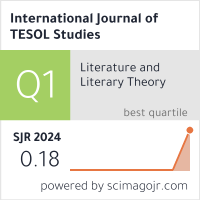2632-6779 (Print)
2633-6898 (Online)


Scopus
Ulrich’s Periodicals Directory (ProQuest)
MLA International Bibliography
MLA Directory of Periodicals
Directory of Open Access Journals (DOAJ)
QOAM (Quality Open Access Market)
British National Bibliography
WAC Clearinghouse Journal Listings
EBSCO Education
ICI Journals Master List
ERIH PLUS
CNKI Scholar
Gale-Cengage
WorldCat
Crossref
Baidu Scholar
British Library
J-Gate
ROAD
BASE
Publons
Google Scholar
Semantic Scholar
ORE Directory
TIRF
China National Center for Philosophy and Social Sciences Documentation
Eden Regala Flores
De La Salle University, Philippines
Abstract
Following Hamers and Blanc’s (2000) main types of codeswitching (CS) and Bautista’s (1999) framework on functions of CS, two distinct sources of data were used to identify and analyze various code switches made by the three female college freshman students during their group discussion, and the two adults (male and female) engaged in a 2-hour audio-taped recording of a one-on-one interview. Results of the study reveal that codeswitching in both groups occurred at the inter-sentential, extra-sentential, and intra-sentential levels. The present study also validates D’Souza’s Competence-related Code-Mixing (CM) (where a person’s competence in L2 is low and therefore has to go back to L1) and Culture-related CM (where a person uses terms and expressions in the heritage language that may not have an accurate translation in another language). In light of these findings, pedagogical implications especially in the Philippine language education contexts are given.
Keywords: code-switching; face-to-face communications; language variation; oral discussions; Tagalog-English